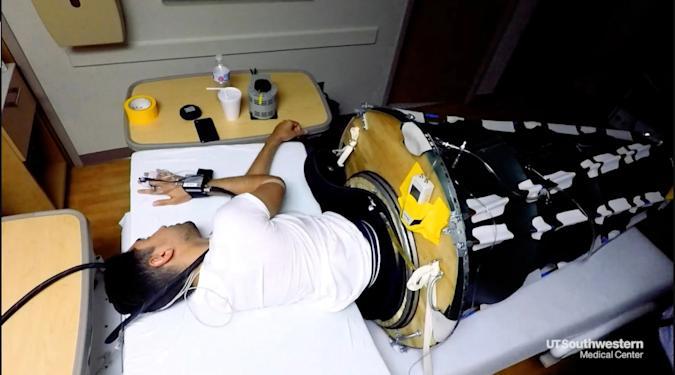
Becoming an astronaut requires perfect 20/20 vision, but unfortunately, the effects of space can cause astronauts to return to Earth with degraded eyesight. Now, researchers from UT Southwestern Medical Center have developed a sleeping bag that that could prevent or reduce those problems by effectively sucking fluid out of astronauts’ heads.
More than half of NASA astronauts that went to the International Space Station (ISS) for more than six months have developed vision problems to varying degrees. In one case, astronaut John Philips returned from a six month stint about the ISS in 2005 with his vision reduced from 20/20 to 20/100, as the BBC reported.
For multi-year trips to Mars, for example, this could become an issue. “It would be a disaster if astronauts had such severe impairments that they couldn’t see what they’re doing and it compromised the mission,” lead researcher Dr. Benjamin Levine told the BBC.

Fluids tend to accumulate in the head when you sleep, but on Earth, gravity pulls them back down into the body when you get up. In the low gravity of space, though, more than a half gallon of fluid collects in the head. That in turn applies pressure to the eyeball, causing flattening that can lead to vision impairment — a disorder called spaceflight-associated neuro-ocular syndrome, or SANS. (Dr. Levine discovered SANS by flying cancer patients aboard zero-G parabolic flights. They still had ports in their heads to receive chemotherapy, which gave researchers an access point to measure pressure within their brains.)
To combat SANS, researchers collaborated with outdoor gear manufacturer REI to develop a sleeping bag that fits around the waist, enclosing the lower body. A vacuum cleaner-like suction device is then activated that draws fluid toward the feet, preventing it from accumulating in the head.
Around a dozen people volunteered to test the technology, and the results were positive. Some questions need to be answered before NASA brings the technology aboard the ISS, including the optimal amount of time astronauts should spend in the sleeping bag each day. They also need to determine if every astronaut should use one, or just those at risk of developing SANS.
Still, Dr. Levine is hopeful that SANS will no longer be an issue by the time NASA is ready to go to Mars. “This is perhaps one of the most mission-critical medical issues that has been discovered in the last decade for the space program,” he said in a statement.









